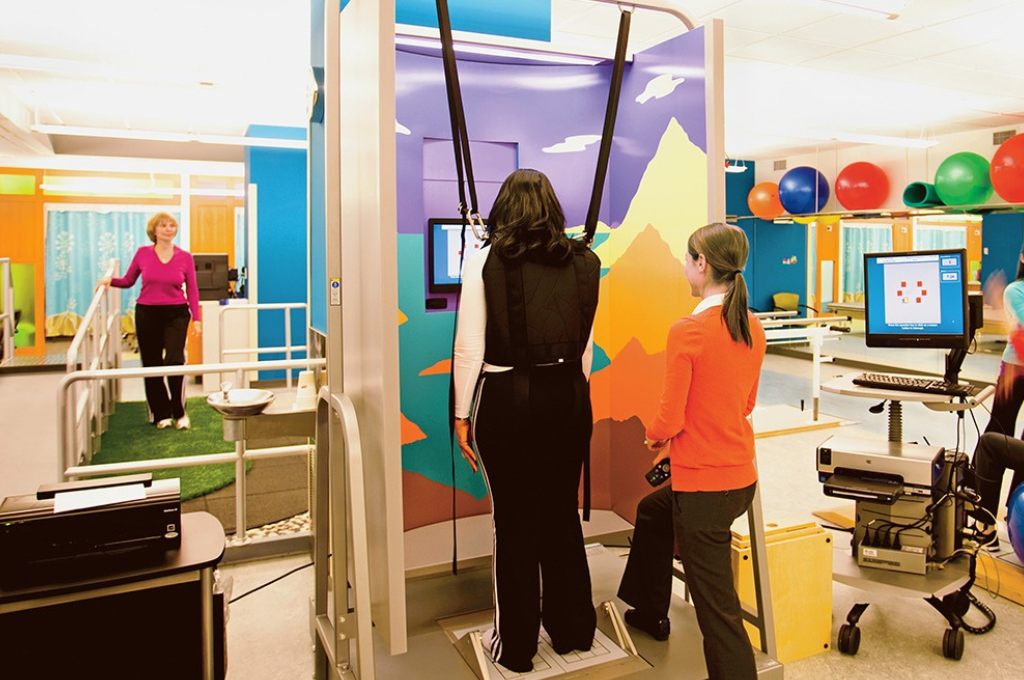The journey through cancer treatment is undeniably challenging, marked by resilience, hope, and unwavering determination. However, the end of treatment doesn’t always signify the end of the road to recovery. Many survivors find themselves grappling with a new set of challenges, known as post-treatment side effects. In recent years, cancer rehabilitation has emerged as a crucial element in the continuum of care, offering physical, emotional, and psychological support to survivors. In this blog, we will explore the importance of cancer rehabilitation in managing post-treatment side effects, providing a pathway to healing and a better quality of life.
What are Post-Treatment Side Effects?
Cancer treatments such as chemotherapy, radiation, and surgery, while vital for eliminating cancer cells, often leave a profound impact on the body. Fatigue, pain, limited mobility, neuropathy, and emotional distress are just some of the side effects many survivors experience after treatment. These physical and emotional challenges can significantly impede one’s ability to resume normal daily activities, affecting their overall quality of life.
What is the Role of Cancer Rehabilitation?
Cancer rehabilitation is a multidisciplinary approach that focuses on addressing the unique needs of cancer survivors. It involves a team of healthcare professionals, including physiotherapists, occupational therapists, psychologists, and nutritionists, working together to create individualized rehabilitation programs. These programs aim to improve physical strength, manage pain, enhance mobility, and address emotional well-being.
1. Physical Therapy: Physical therapists design exercise programs tailored to the survivor’s specific needs. These exercises help rebuild strength, improve flexibility, and restore balance, enabling survivors to regain their independence.
2. Occupational Therapy: Occupational therapists assist survivors in adapting to daily activities. They provide strategies and tools to manage fatigue, suggesting modifications in the home environment and teaching energy conservation techniques.
3. Psychological Support: Coping with the emotional aftermath of cancer treatment is as crucial as addressing the physical aspects. Psychologists and counselors offer support to survivors, helping them navigate the complex emotions that arise post-treatment. Therapy sessions provide a safe space for survivors to express their fears, anxieties, and uncertainties, empowering them to rebuild their emotional well-being.
4. Nutritional Counseling: Proper nutrition plays a vital role in recovery. Nutritionists work with survivors to create balanced meal plans that support healing, boost energy levels, and enhance overall well-being. They address issues such as loss of appetite, taste changes, and dietary restrictions, ensuring survivors receive the necessary nutrients for their recovery.

The Benefits of Cancer Rehabilitation
The benefits that cancer rehabilitation for post-treatment side effects include:
- Improved Physical Function: Cancer rehabilitation helps survivors regain strength, endurance, and mobility, allowing them to perform daily tasks more easily.
- Pain Management: Many cancer survivors experience pain due to surgery or treatment-related complications. Rehabilitation programs include pain management techniques, reducing discomfort, and improving the overall quality of life.
- Enhanced Emotional Well-being: Coping with the emotional aftermath of cancer is challenging. Counseling and support from mental health professionals help survivors navigate their emotions, reducing anxiety and depression.
- Increased Independence: By addressing physical and emotional challenges, rehabilitation after cancer therapy enables survivors to regain their independence. This newfound self-sufficiency enhances their confidence and overall outlook on life.
- Better Quality of Life: Ultimately, cancer rehabilitation contributes to a significantly improved quality of life for survivors. By addressing both the physical and emotional aspects of recovery, survivors can lead fulfilling lives beyond cancer.
- Social Support and Community: Cancer rehabilitation programs often create a supportive community where survivors can connect with others who have faced similar challenges. These connections provide a sense of belonging, understanding, and camaraderie.
- Prevention of Secondary Health Issues: Cancer survivors are often at an increased risk of developing secondary health issues such as cardiovascular problems, diabetes, or osteoporosis due to the impact of cancer treatments. Cancer rehabilitation not only focuses on current issues but also addresses these potential future health risks.
- Family and Caregiver Support: Cancer doesn’t affect just the individual diagnosed; it profoundly impacts the family and caregivers. Cancer rehabilitation programs offer education and support not only to survivors but also to their families and caregivers.
- Customized Approach: Each cancer survivor’s journey is unique, and so are their rehabilitation needs. Cancer rehabilitation programs offer a customized approach, tailoring the rehabilitation plan according to the individual’s specific challenges, preferences, and goals. This personalized approach ensures that survivors receive the most effective and targeted care, maximizing the benefits of the rehabilitation process.
- Promoting Long-Term Health and Wellness: Cancer rehabilitation isn’t just a short-term solution; it promotes long-term health and wellness. By adopting healthy lifestyle changes, survivors can continue to benefit from their rehabilitation experience long after the formal program ends.
- Fostering Resilience and Mental Health: Post-Cancer treatment rehabilitation doesn’t just focus on the physical aspects of recovery; it also nurtures mental resilience. Through counseling, support groups, and therapeutic interventions, cancer rehabilitation helps survivors build mental fortitude.
- Encouraging Active Lifestyle Choices: One of the significant benefits of cancer rehabilitation is the encouragement of an active lifestyle. Regular physical activity not only aids in physical recovery but also boosts mental well-being.
- Addressing Sexual Health: Cancer and its treatments can significantly impact a survivor’s sexual health. Many survivors find it difficult to discuss these issues, leading to strains in relationships and self-esteem. Cancer rehabilitation programs provide a safe space to address these concerns.
- Supporting Career and Vocational Goals: Returning to work or pursuing vocational interests after cancer treatment can be daunting. Cancer rehabilitation programs often include vocational counseling and support. Professionals help survivors assess their skills, explore new career paths if necessary, and provide guidance on re-entering the workforce.
Conclusion
Cancer rehabilitation is a beacon of hope for survivors, guiding them toward a life of normalcy and well-being after the storm of cancer treatment. By addressing the multifaceted challenges posed by post-treatment side effects, rehabilitation programs at Sukino Healthcare provide survivors with the tools they need to rebuild their lives. It’s not just about surviving; it’s about thriving after cancer. Through the dedicated efforts of healthcare professionals and the unwavering determination of survivors, the journey beyond cancer treatment becomes a pathway to healing, resilience, and a brighter tomorrow.
We are India’s first comprehensive continuum care provider. We provide multidisciplinary out of hospital care to acute and post-acute and chronically ill patients at our critical care facilities and your home.


